Showing off all your hard work and in-depth analysis will be easier and faster than ever with Visallo 4.0, thanks to a host of new formatting and annotation options for graphs and maps. CLICK HERE for a sneak peak of what to expect with the new release.
Category Archives: analytics
Data Analytics Transforms Policing
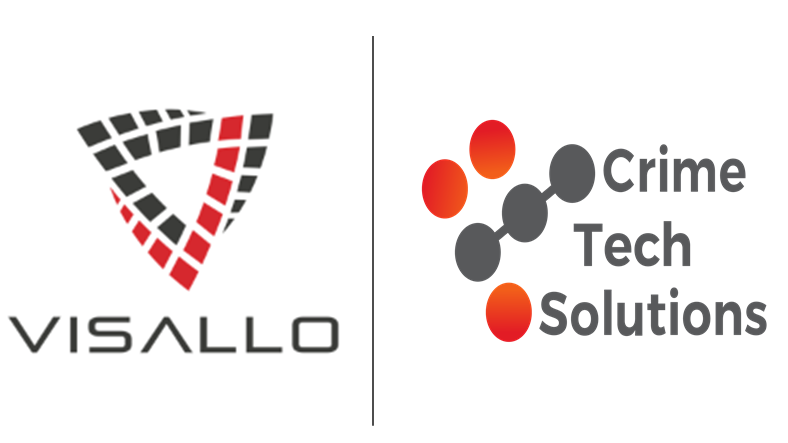 Great article from our friends at Visallo!
Great article from our friends at Visallo!
As police find new methods of tracking and solving crime, their needs and priorities in a data analytics strategy are bound to continuously evolve.
Be sure to read the article at the popular Visallo Blog, and for more information on how Visallo and Crime Tech Solutions are changing the investigation analytics world, contact us with the form below.
[contact-form][contact-field label=”Name” type=”name” required=”1″ /][contact-field label=”Email” type=”email” required=”1″ /][contact-field label=”Website” type=”url” /][contact-field label=”Comment” type=”textarea” required=”1″ /][/contact-form]
SoCal City Selects Crime Tech Solutions for Link Analysis.
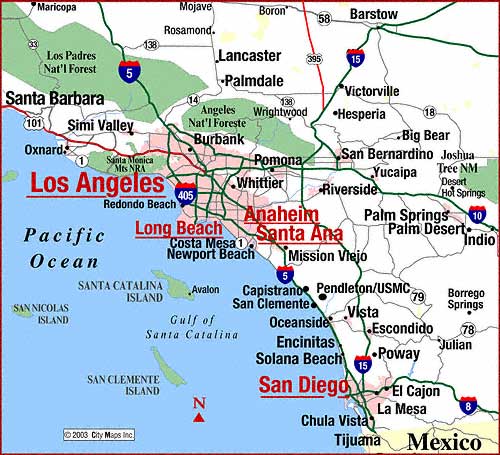 Crime Tech Solutions, LLC – a fast growing, vibrant software company based in Leander, TX today announced that a large, coastal city in California has selected them to provide sophisticated link and social network analysis software.
Crime Tech Solutions, LLC – a fast growing, vibrant software company based in Leander, TX today announced that a large, coastal city in California has selected them to provide sophisticated link and social network analysis software.
Crime Tech Solutions was awarded the contract based upon its price/performance leadership in the world of big data analytics for law enforcement and other investigative agencies.
Link analysis software is used by investigators to visualize hidden connections between people, places, and things within large and disparate data sets.
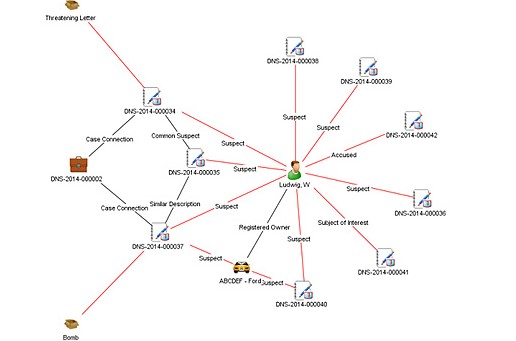
“Our link analysis software gives investigators an edge in the way they analyze data”, said Crime Tech Solutions’ CEO, Doug Wood. “By finding and displaying those hard to find connections and anomalies that reside in different data stores, our software helps investigative agencies more clearly see how networks of entities exist.”
Crime Tech Solutions said that the software implementation is already underway, and that the software will make life a little more miserable for criminals in the Southern California city.
The company also develops investigative case management and criminal intelligence software for law enforcement agencies of all sizes.
A Look at Digital Policing
For law enforcement and other police service agencies, the ability to rapidly manage and interpret massive amounts of data is of paramount importance. Front line officers require timely and accurate data that enables intelligence-led decision making, and officers must be deployed proactively in order to deter and prevent criminal behavior.
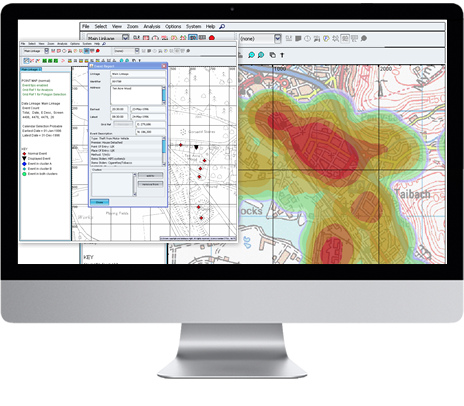 As we have written before, the true lifeblood of effective policing is data. With disparate and poorly integrated systems, however, the intelligence that can be gleaned from that data is mitigated. The information is too often hidden or lost.
As we have written before, the true lifeblood of effective policing is data. With disparate and poorly integrated systems, however, the intelligence that can be gleaned from that data is mitigated. The information is too often hidden or lost.
In order to better utilize data – coming from sources such as Records Management Systems, Computer Aided Dispatch, Criminal Intelligence Systems, and other such repositories – innovative law enforcement agencies turn to technology-agnostic, scalable analytics platforms which blend historical and real-time data to both solve today’s crimes and predict tomorrow’s. Supported by purpose-built law enforcement analytics, agencies can keep pace with growing volumes of data and stay one step ahead of the criminals via actionable insights.

For disparate data to be transformed to actionable insights, law enforcement agencies must deal with several challenges:
- Timeliness – Unlike fine wine, data tends to lose value over time. Crime happens in real time, and what was the case six months ago may not be the case today.
- Reliability – The data absolutely must be trusted by the officers entrusted with using it.
- Fragmentation – If the data is overly fragmented or otherwise unavailable, it becomes cumbersome to use and holds little value.
- Auditability – Without a clear and recognized audit trail, agencies are not able to effectively track the decisions made in the field versus what the analytics pointed to.
 An analytics solution helps blend data from disparate sources in order to provide officers with a trusted, single view of the truth. Simply put, the right analytics software will help agencies manage the challenges above.
An analytics solution helps blend data from disparate sources in order to provide officers with a trusted, single view of the truth. Simply put, the right analytics software will help agencies manage the challenges above.
While there has been a ton of negative news related to predictive policing, recently, using an analytics platform approach allows agencies to consolidate, analyze, and utilize ALL of their data. This analysis can – and does – help agencies become more efficient and more effective.
NBC News gets rare look at NYPD CompStat meeting
Posted by Tyler Wood, Operations Manager at Crime Tech Solutions.

NBC News was recently allowed a rare opportunity to sit in on a CompStat (computer statistics) meeting with the New York Police Department and they shared their experience with their viewers.
Watch the short video HERE.
(NOTE: Crime Tech Solutions is an Austin, TX based provider of crime and fraud analytics software for commercial and law enforcement groups. We proudly support the Association of Certified Fraud Examiners (ACFE), International Association of Chiefs of Police (IACP), Association of Law Enforcement Intelligence Units (LEIU) and International Association of Crime Analysts (IACA). Our offerings include sophisticated link analysis software, comprehensive crime analytics with mapping and predictive policing, and criminal intelligence database management systems.)
China building big data platform for pre-crime
Re-posted by Crime Tech Solutions – Your Source for Investigation Software
It’s “precrime” meets “thoughtcrime.” China is using its substantial surveillance apparatus as the basis for a “unified information environment” that will allow authorities to profile individual citizens based upon their online behaviors, financial transactions, where they go, and who they see. The authorities are watching for deviations from the norm that might indicate someone is involved in suspicious activity. And they’re doing it with a hand from technology pioneered in the US.
 As Defense One’s Patrick Tucker reports, the Chinese government is leveraging “predictive policing” capabilities that have been used by US law enforcement, and it has funded research into machine learning and other artificial intelligence technologies to identify human faces in surveillance video. The Chinese government has also used this technology to create a “Situation-Aware Public Security Evaluation (SAPE) platform” that predicts “security events” based on surveillance data, which includes anything from actual terrorist attacks to large gatherings of people.
As Defense One’s Patrick Tucker reports, the Chinese government is leveraging “predictive policing” capabilities that have been used by US law enforcement, and it has funded research into machine learning and other artificial intelligence technologies to identify human faces in surveillance video. The Chinese government has also used this technology to create a “Situation-Aware Public Security Evaluation (SAPE) platform” that predicts “security events” based on surveillance data, which includes anything from actual terrorist attacks to large gatherings of people.
The Chinese government has plenty of data to feed into such systems. China invested heavily in building its surveillance capabilities in major cities over the past five years, with spending on “domestic security and stability” surpassing China’s defense budget—and turning the country into the biggest market for security technology. And in December, China’s government gained a new tool in surveillance: anti-terrorism laws giving the government even more surveillance powers and requiring any technology companies doing business in China to provide assistance in that surveillance.
The law states that companies “shall provide technical interfaces, decryption and other technical support and assistance to public security and state security agencies when they are following the law to avert and investigate terrorist activities”—in other words, the sort of “golden key” that FBI Director James Comey has lobbied for in the US. For obvious reasons, the Chinese government is particularly interested in the outcome of the current legal confrontation between the FBI and Apple over the iPhone used by Syed Farook.
Bloomberg reports that China is harnessing all that data in an effort to perform behavioral prediction at an individual level—tasking the state-owned defense contractor China Electronics Technology Group to develop software that can sift through the online activities, financial transactions, work data, and other behavioral data of citizens to predict which will perform “terrorist” acts. The system could watch for unexpected transfers of money, calls overseas by individuals with no relatives outside the country, and other trigger events that might indicate they were plotting an illegal action. China’s definition of “terrorism” is more expansive than that of many countries.
At a news conference in December, China Electronics Technology Group Chief Engineer Wu Manqing told reporters, “We don’t call it a big data platform, but a united information environment… It’s very crucial to examine the cause after an act of terror, but what is more important is to predict the upcoming activities.”
__
(NOTE: Crime Tech Solutions is an Austin, TX based provider of crime and fraud analytics software for commercial and law enforcement groups. We proudly support the Association of Certified Fraud Examiners (ACFE), International Association of Chiefs of Police (IACP), Association of Law Enforcement Intelligence Units (LEIU) and International Association of Crime Analysts (IACA). Our offerings include sophisticated link analysis software, comprehensive crime analytics with mapping and predictive policing, and criminal intelligence database management systems.)
Link Analysis and Crime – An examination.
Posted by Tyler Wood, Operations Manager at Crime Tech Solutions
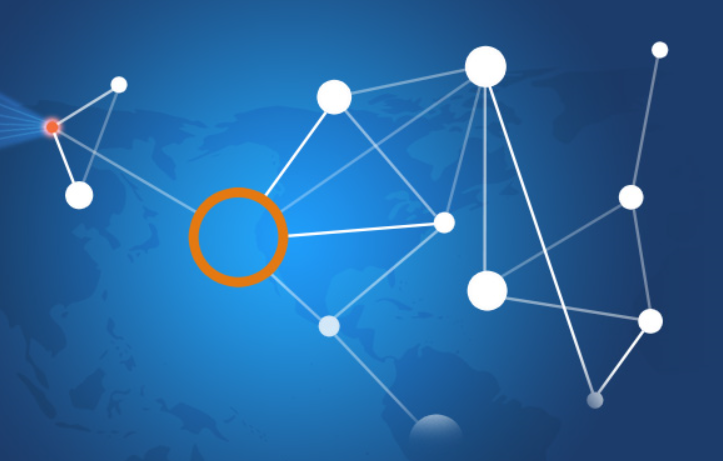 The topic of fraud is widely discussed, and the focus of thousands upon thousands of articles. Television shows such as Crime, Inc and American Greed have become popular due, in part, to our fascination with the topic of fraud.
The topic of fraud is widely discussed, and the focus of thousands upon thousands of articles. Television shows such as Crime, Inc and American Greed have become popular due, in part, to our fascination with the topic of fraud.
The organizations that are affected by fraud are also fascinated… but for entirely different reasons. Some estimates suggest that the US economy loses 11 trillion dollars each year due to one form of fraud or another. It’s little wonder, therefore, that the companies most frequently defrauded have been heavily investing in anti-fraud technologies at an increasing rate over the past decade or more.
The biggest problem with fraud, of course, is that it is always evolving in a very Darwinian fashion. Like a living, breathing entity, fraud schemes change over time in order to survive. As the targets of fraud schemes put new policies, procedures and/or systems to deter the activities, the schemes modify and find new ways to survive.

So, since the nature of criminal activity is such that they constantly change, how do investigators find a fool proof methodology to ensure they are 100% safe from them? The answer, of course, is that they can’t. They never will; at least not until we live in a world such as the one depicted in the 2002 film Minority Report, starring Tom Cruise. In that movie, criminals are arrested prior to committing a crime based upon the predictions of psychics called ‘Precogs’. Corporations and individual targets of fraud can only wish.
Nope, there are no Precogs running around locking up would-be practitioners of fraud that would protect banks, insurance companies, Medicaid and Medicare programs, victims of Ponzi schemes, victims of identity theft, and countless others. Instead, organizations rely upon skilled knowledge workers using purpose-built crime and fraud analytics technology that can detect anomalies in patterns, suspicious transactions, hotspot mapping, networks of fraudsters, and other sophisticated data analytics tools.

Crime and fraud analytics
Any discussion of analytics and investigation software must touch upon the topic of ‘big data’. No longer just a buzz word, big data literally fuels the insights gathered by organizations in every area of business. Naturally, then, organizations who have been traditionally targeted by fraudsters have increasingly invested in crime technology such as investigation software and analytics in order to exploit the phenomenon.
 Of course, big data in and by itself does nothing. It just sits there. Nobody has ever yelled “Help! We’ve been defrauded! Call the big data!” Big data is only useful when it can be transformed into ‘smart data’. In other words, understanding the big picture of costly fraudulent activities is not akin to understanding the specifics of ‘who’ is defrauding you, and ‘how’ they are doing it.
Of course, big data in and by itself does nothing. It just sits there. Nobody has ever yelled “Help! We’ve been defrauded! Call the big data!” Big data is only useful when it can be transformed into ‘smart data’. In other words, understanding the big picture of costly fraudulent activities is not akin to understanding the specifics of ‘who’ is defrauding you, and ‘how’ they are doing it.
Those questions can best be answered through the powerful data mining and link analysis software tools offered by Austin, TX based Crime Tech Solutions in partnership with Sterling, VA based Visallo. Effective link analysis complements big data analytics platforms, helping to expose previously undetected fraud, and the entities (people or organizations) committing it.
Link Analysis – Transforming big data into smart data
By definition, link analysis is a data analysis technique that examines relationships among people, places, and things. As a visual tool, link analysis provides users a powerful method to quickly understand and ‘see’ what is happening. Because of this, it is widely used by financial institutions such as banks and insurance companies to uncover criminal networks, improve fraud investigations, detect insider fraud, and expose money laundering schemes. Similarly, government agencies use link analysis to investigate fraud, enhance screening processes, uncover terrorist networks and investigate criminal activities.
At Crime Tech Solutions, we liken the question of how to detect and deter fraud to ‘How do you eat an elephant?’ The answer, of course, is one bite at a time. If big data is the elephant, comprehensive link analysis software is part of the one ‘bite’ at a time. Or should we say ‘byte’.
(NOTE: Crime Tech Solutions is an Austin, TX based provider of investigation software and analytics for commercial and law enforcement groups. We proudly support the Association of Certified Fraud Examiners (ACFE), International Association of Chiefs of Police (IACP), Association of Law Enforcement Intelligence Units (LEIU) and International Association of Crime Analysts (IACA). Our offerings include sophisticated link analysis software, an industry-leading investigation case management solution, and criminal intelligence database management systems.)
What is Crime Analysis?
Posted by Tyler Wood Crime Tech Solutions, your source for investigation software.
The information provided on this page comes primarily from Boba, R. (2008: Pages 3 through 6) Crime Analysis with Crime Mapping. For a full discussion of the crime analysis discipline, refer to the book which can be obtained through www.sagepub.com.
Over the past 20 years, many scholars have developed definitions of crime analysis. Although definitions of crime analysis differ in specifics, they share several common components: all agree that crime analysis supports the mission of the police agency, utilizes systematic methods and information, and provides information to a range of audiences. Thus, the following definition of crime analysis is used as the foundation of this initiative:
Crime analysis is the systematic study of crime and disorder problems as well as other police–related issues—including sociodemographic, spatial, and temporal factors—to assist the police in criminal apprehension, crime and disorder reduction, crime prevention, and evaluation.
Clarification of each aspect of this definition helps to demonstrate the various elements of crime analysis. Generally, to study means to inquire into, investigate, examine closely, and/or scrutinize information. Crime analysis, then, is the focused and systematic examination of crime and disorder problems as well as other police-related issues. Crime analysis is not haphazard or anecdotal; rather, it involves the application of social science data collection procedures, analytical methods, and statistical techniques.
More specifically, crime analysis employs both qualitative and quantitative data and methods. Crime analysts use qualitative data and methods when they examine non-numerical data for the purpose of discovering underlying meanings and patterns of relationships. The qualitative methods specific to crime analysis include field research (such as observing characteristics of locations) and content analysis (such as examining police report narratives). Crime analysts use quantitative data and methods when they conduct statistical analysis of numerical or categorical data. Although much of the work in crime analysis is quantitative, crime analysts use simple statistical methods, such as frequencies, percentages, means, and rates. Typical crime analysis tools include link analysis and crime mapping software.
The central focus of crime analysis is the study of crime (e.g., rape, robbery, and burglary); disorder problems (e.g., noise complaints, burglar alarms, and suspicious activity); and information related to the nature of incidents, offenders, and victims or targets of crime (targets refer to inanimate objects, such as buildings or property). Crime analysts also study other police-related operational issues, such as staffing needs and areas of police service. Even though this discipline is called crime analysis, it actually includes much more than just the examination of crime incidents.
Although many different characteristics of crime and disorder are relevant in crime analysis, the three most important kinds of information that crime analysts use are sociodemographic, spatial, and temporal. Sociodemographic information consists of the personal characteristics of individuals and groups, such as sex, race, income, age, and education. On an individual level, crime analysts use sociodemographic information to search for and identify crime suspects. On a broader level, they use such information to determine the characteristics of groups and how they relate to crime. For example, analysts may use sociodemographic information to answer the question, “Is there a white, male suspect, 30 to 35 years of age, with brown hair and brown eyes, to link to a particular robbery?” or “Can demographic characteristics explain why the people in one group are victimized more often than people in another group in a particular area?”
The spatial nature of crime and other police-related issues is central to understanding the nature of a problem. In recent years, improvements in computer technology and the availability of electronic data have facilitated a larger role for spatial analysis in crime analysis. Visual displays of crime locations (maps) and their relationship to other events and geographic features are essential to understanding the nature of crime and disorder. Recent developments in criminological theory have encouraged crime analysts to focus on geographic patterns of crime, by examining situations in which victims and offenders come together in time and space.
Finally, the temporal nature of crime, disorder, and other police-related issues is a major component of crime analysis. Crime analysts conduct several levels of temporal analysis, including (a) examination of long-term patterns in crime trends over several years, the seasonal nature of crime, and patterns by month; (b) examination of mid-length patterns, such as patterns by day of week and time of day; and (c) examination of short-term patterns, such as patterns by day of the week, time of day, or time between incidents within a particular crime series.
The final part of the crime analysis definition—”to assist the police in criminal apprehension, crime and disorder reduction, crime prevention, and evaluation” generally summarizes the purpose and goals of crime analysis. The primary purpose of crime analysis is to support (i.e., “assist”) the operations of a police department. Without police, crime analysis would not exist as it is defined here.
The first goal of crime analysis is to assist in criminal apprehension, given that this is a fundamental goal of the police. For instance, a detective may be investigating a robbery incident in which the perpetrator used a particular modus operandi (i.e., method of the crime). A crime analyst might assist the detective by searching a database of previous robberies for similar cases.
Another fundamental police goal is to prevent crime through methods other than apprehension. Thus, the second goal of crime analysis is to help identify and analyze crime and disorder problems as well as to develop crime prevention responses for those problems. For example, members of a police department may wish to conduct a residential burglary prevention campaign and would like to target their resources in areas with the largest residential burglary problem. A crime analyst can assist by conducting an analysis of residential burglary to examine how, when, and where the burglaries occurred along with which items were stolen. The analyst can then use this information to develop crime prevention suggestions, (such as closing and locking garage doors) for specific areas.
Many of the problems that police deal with or are asked to solve are not criminal in nature; rather, they are related to quality of life and disorder. Some examples include false burglar alarms, loud noise complaints, traffic control, and neighbor disputes. The third goal of crime analysis stems from the police objective to reduce crime and disorder. Crime analysts can assist police with these efforts by researching and analyzing problems such as suspicious activity, noise complaints, code violations, and trespass warnings. This research can provide officers with information they can use to address these issues before they become more serious criminal problems.
The final goal of crime analysis is to help with the evaluation of police efforts by determining the level of success of programs and initiatives implemented to control and prevent crime and disorder and measuring how effectively police organizations are run. In recent years, local police agencies have become increasingly interested in determining the effectiveness of their crime control and prevention programs and initiatives. For example, an evaluation might be conducted to determine the effectiveness of a two-month burglary surveillance or of a crime prevention program that has sought to implement crime prevention through environmental design (CPTED) principles within several apartment communities. Crime analysts also assist police departments in evaluating internal organizational procedures, such as resource allocation (i.e., how officers are assigned to patrol areas), realignment of geographic boundaries, the forecasting of staffing needs, and the development of performance measures. Police agencies keep such procedures under constant scrutiny in order to ensure that the agencies are running effectively.
In summary, the primary objective of crime analysis is to assist the police in reducing and preventing crime and disorder. Present cutting edge policing strategies, such as hotspots policing, problem-oriented policing, disorder policing, intelligence-led policing, and CompStat management strategies, are centered on directing crime prevention and crime reduction responses based on crime analysis results. Although crime analysis is recognized today as important by both the policing and the academic communities, it is a young discipline and is still being developed. Consequently, it is necessary to provide new and experienced crime analysts with training and assistance that improves their skills and provides them examples of best practices from around the country and the world. http://crimetechsolutions.com
